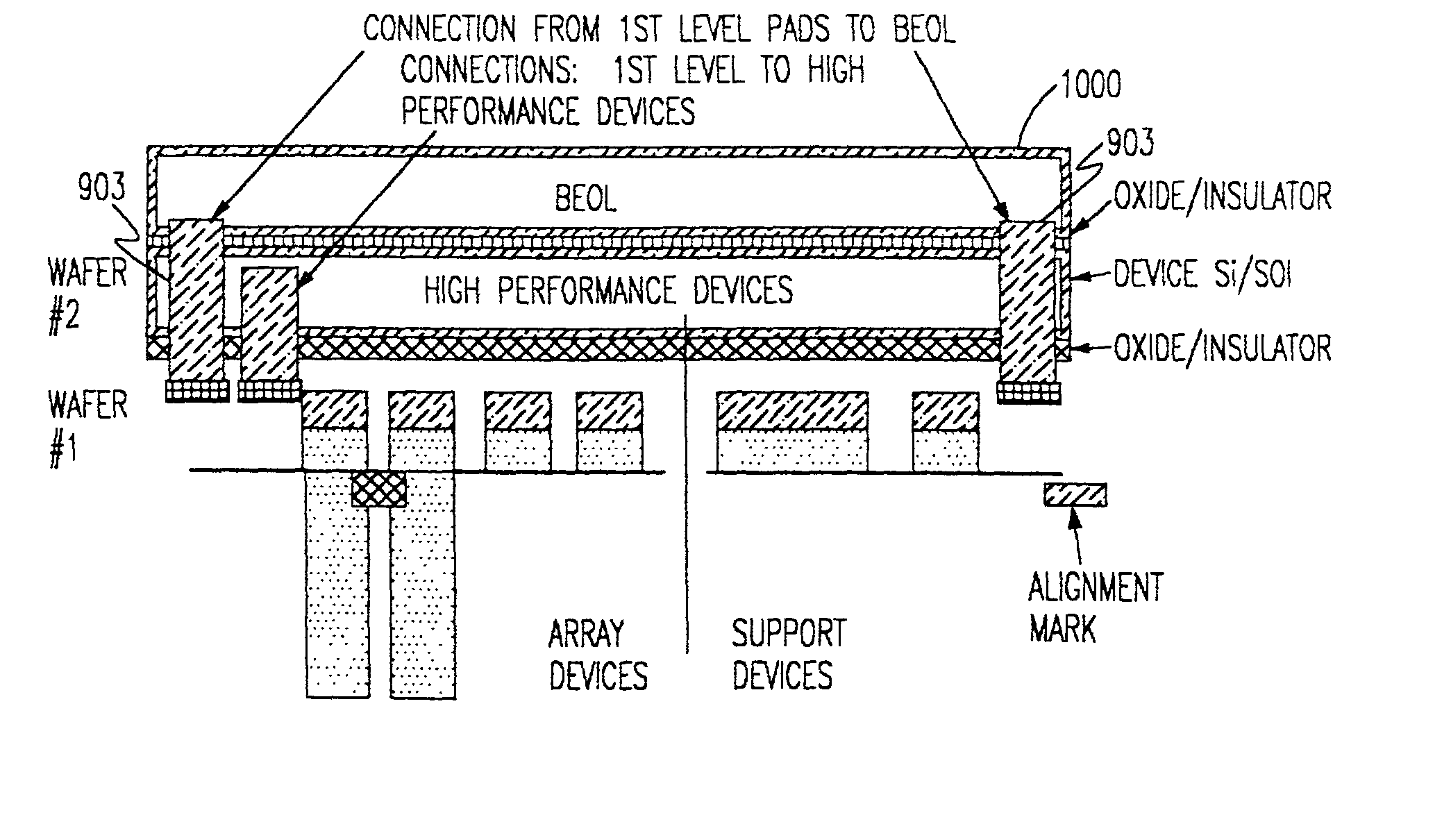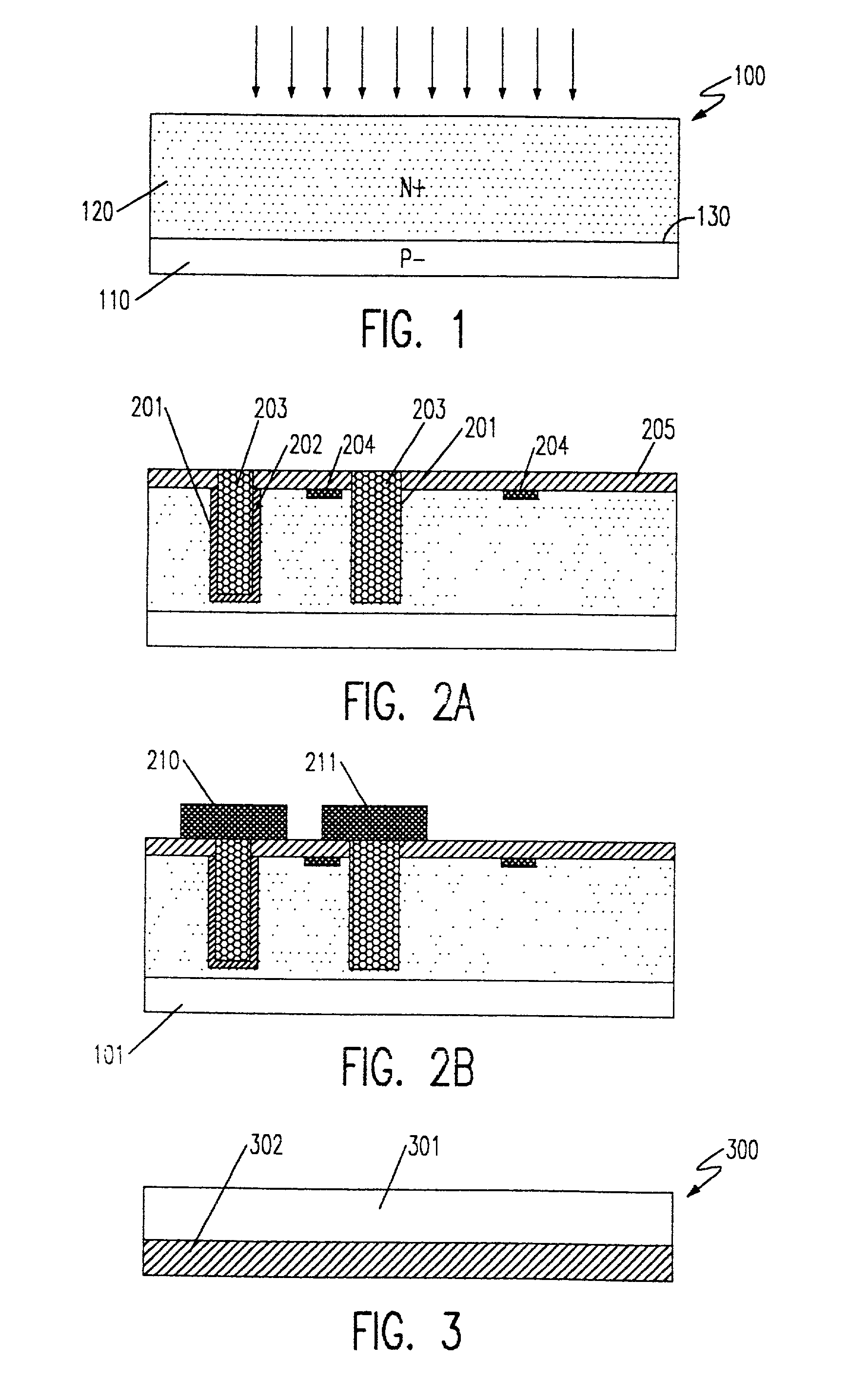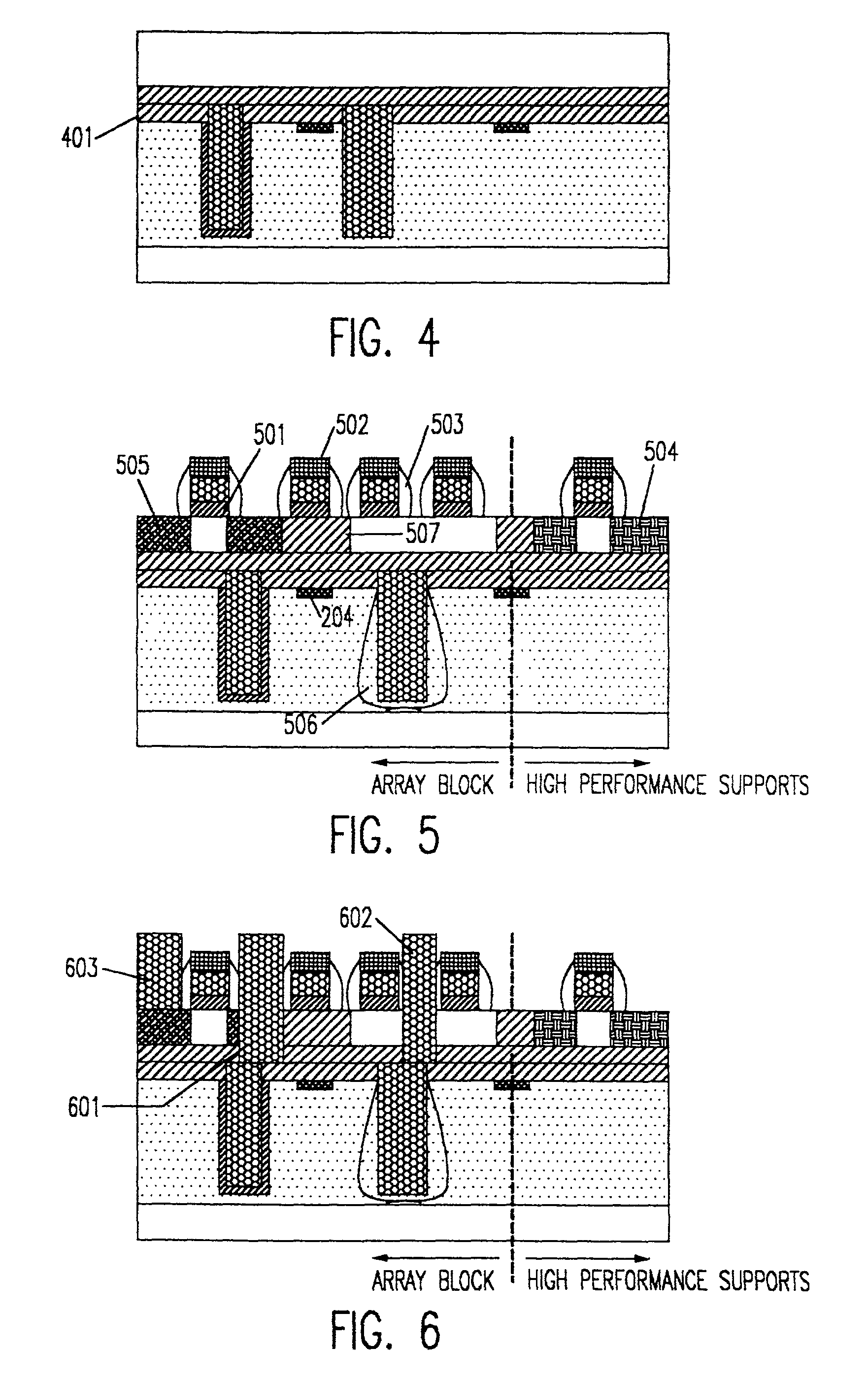SOI stacked dram logic
a logic and stacking technology, applied in semiconductor/solid-state device testing/measurement, semiconductor device details, semiconductor/solid-state device testing/measurement, etc., can solve the problem of incompatibility of soi transistors and trench capacitors, large chip area and other issues, to achieve the effect of avoiding the formation of memory cells
- Summary
- Abstract
- Description
- Claims
- Application Information
AI Technical Summary
Benefits of technology
Problems solved by technology
Method used
Image
Examples
Embodiment Construction
[0026] Referring now to the drawings, and more particularly to FIG. 1, there is shown, in cross-sectional view, a bulk silicon wafer 100, preferably of the p- type. However, it should be understood that the conductivity types of impurities are not important to the principles of the invention or the types of circuit elements integrated therein to which the invention may be applied. That is, while the invention clearly has particular applicability to dynamic memories with respect to which it will be explained and for which the illustrated conductivities are preferred, the invention is more generally directed to the formation of composite, layered, chips with optimally short and reliably formed interconnections therebetween which are lithographically defined at pitches comparable to intra chip connections while incorporating incompatible technologies.
[0027] For purposes of forming a dynamic memory array, a deep n+ implantation is performed to create a thick conductive plate layer 120 w...
PUM
 Login to View More
Login to View More Abstract
Description
Claims
Application Information
 Login to View More
Login to View More - R&D
- Intellectual Property
- Life Sciences
- Materials
- Tech Scout
- Unparalleled Data Quality
- Higher Quality Content
- 60% Fewer Hallucinations
Browse by: Latest US Patents, China's latest patents, Technical Efficacy Thesaurus, Application Domain, Technology Topic, Popular Technical Reports.
© 2025 PatSnap. All rights reserved.Legal|Privacy policy|Modern Slavery Act Transparency Statement|Sitemap|About US| Contact US: help@patsnap.com



